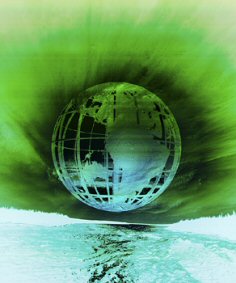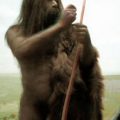
The ancient relatives of modern dung beetles and earthworms were reduced in size by as much as 50 percent during the Earth’s last warming period, creating new concerns for agricultural scientists already worried about climbing temperatures and dwindling rainfall. The new research into dwarfism in soil dwelling organisms during the Paleocene-Eocene Thermal Maximum (PETM) era appears in the journalProceedings of the National Academy of Sciences.
The PETM was a short interval 55 million years ago marked by a spike in the atmosphere’s carbon dioxide levels and global temperatures, conditions being repeated on Earth now. The study is the first to establish that soil biota experienced a loss in size similar to mammals, which were reduced in size by as much as 50 percent during the PETM. The new overy has broad implications that may be very significant to understanding modern climate change and its impending effect on life.
“In our initial hypothesis, we thought that there would be no response to climate change, that the animals would be protected because they’re underground,” said Stephen Hasiotis, a geologist at the University of Kansas. “We also proposed that there would be minimal and protracted change or some sort of a delayed response. Instead, we find that they did experience the same kind of change as vertebrates living during the same period.”
The soil-dwelling organisms examined by Hasiotis and co-researcher Jon Smith, a scientist at the Kansas Geological Survey, are the relatives of modern ants, cicadas, dung beetles, earthworms and crayfish.
The scientists say that their results foreshadow biological outcomes that may result due to the planet’s current jump in carbon dioxide concentration and temperatures. They suggest that museum collections of insects compiled over the last few hundred years should be studied to determine whether body sizes of modern insects are indeed getting smaller.
“The PETM is seen as a good analog for modern climate change because it’s occurring at roughly the same speed and magnitude,” said Smith. “The take-home lesson is that there can be cascading effects that ripple through an ecosystem when you change just one aspect. Modern climate change can have many effects that aren’t going to be as immediately visible as sea-level change. We could be changing soil conditions over vast portions of the world and affecting the soil organisms themselves – and that will impact our own agriculture.”
The researchers attribute dwarfism in soil-dwelling creatures to faster rates of development in individuals, along with decreasing life spans. “The soil biota evolved for certain soil temperatures and conditions – and for this geologically brief period of time, those conditions were changed,” Hasiotis said. “They probably were adapting to those warmer conditions by having a smaller body size.”
Related:
Food, Notorious Food
Down On The Farm? Yields, Nutrients And Soil Quality
Asia facing future food crisis
Insects The Likely Winners From Warming Climate
Change in monsoon patterns likely
Grim Future For Global Water Resources









Comments are closed.